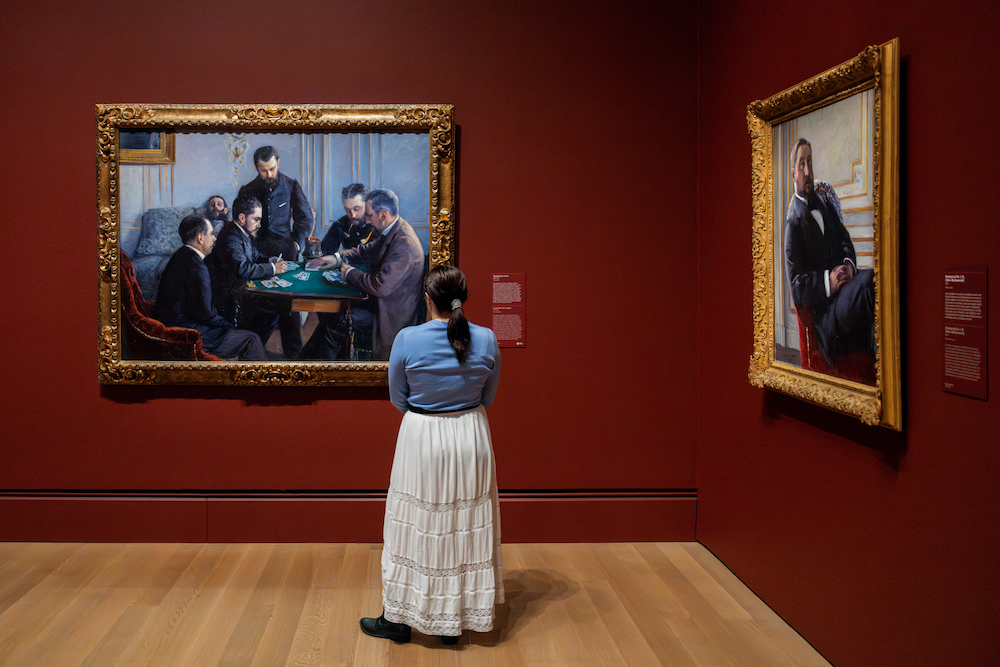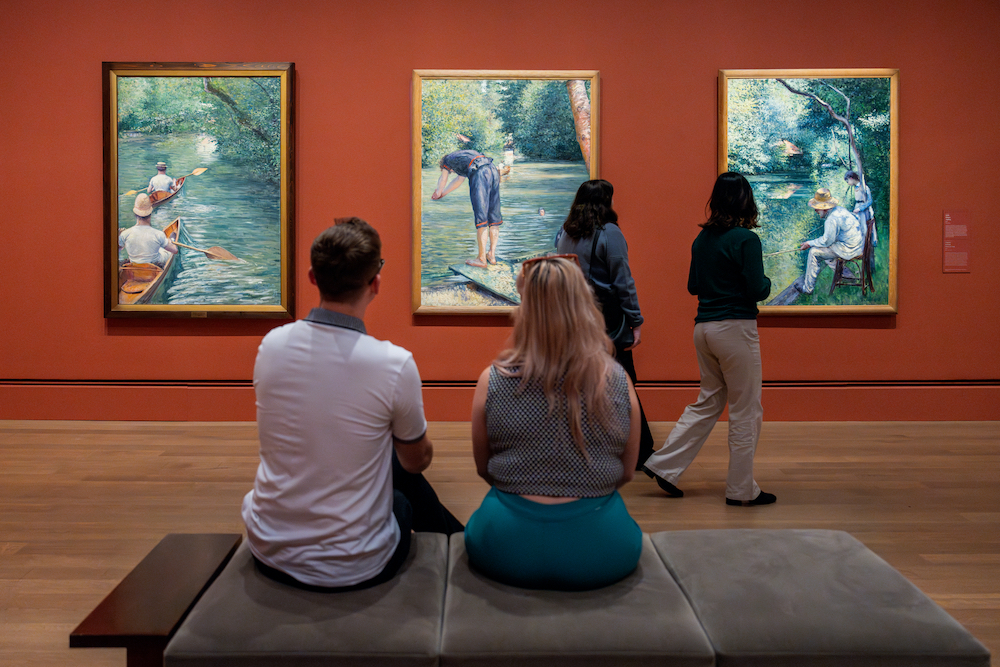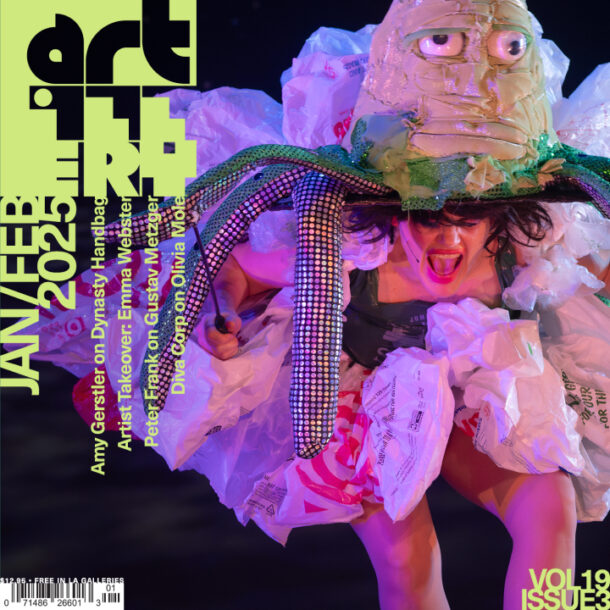Impressionism, with its kitsch trinkets and gift shop ephemera, lives in a realm of surfaces. I’m not alone in thinking this—most of us know Monet through wall calendars, not the Musée. The prevalence of these reproductions make the originals, when seen, difficult to perceive on their own terms. Perhaps our overexposure to Impressionist reproductions is what prompts curatorial desire to bring fresh eyes or a novel context to the real paintings. But in an effort to render the work visible to a contemporary audience, curators run the risk of overreach. The Caillebotte show “Painting Men” at the Getty (previously at the Musée d’Orsay and then heading to the Art Institute of Chicago) lands somewhere between a conventional Impressionist retrospective and an ambitious rehistoricizing of an artist’s legacy. In recent months, the exhibition has attracted criticism from Le Monde and ardent defenses in Artforum, among others. The French press is mad at the American curators for encouraging an interpretation that employs “gender studies” or to use the infinitely more absurd French neologism, “le wokisme.”
The conceit of “Painting Men” is the idea that Caillebotte, in contrast to his contemporaries, was uniquely interested in masculinity and male subjects. Caillebotte’s vision of masculinity was complex and contradictory. It is easy to imagine both the artist, who came from a wealthy French family, and his subjects dominating the 19th-century rooms they entered simply by virtue of their class, race, and gender. But these men also display a quasi-feminine air of an effete and a dandy. The central question discussed loosely in the show and at nauseam in the press: Was Caillebotte gay? The answer is historically unclear (he never married, surrounded himself with men, but seemed to have a female partner later in life). The paintings in and of themselves pose a compelling argument in favor. Most blatantly, Man at His Bath (1884) depicts a naked man toweling off, his carefully painted and peachy muscular butt is smack-dab center.
I have my misgivings about the Getty’s curation, but my hesitancy isn’t that the show is too focused on “gender studies.” I don’t believe in the sanctity of sticking to the knowable historical archive when it is bound to have omissions. On the other hand, there is something undeniably lost in taking implicit or unsaid undertones and situating them in a confined contemporary discourse.

Installation view featuring The Bezique Game, about 1881 (Louvre Abu Dhabi).
The work itself is hardly polemical: The Floor Scrapers (1875), one of Caillebotte’s most famous paintings and a work that arrives early on in the show, depicts three shirtless men crouched at work stripping wooden floors. The light is waning and diffuse; the painting is steeped in cold, deep ochres. The pattern of pale stripes on the floor mirrors the form and color of the workers’ long, thin, outstretched arms. Two of the men’s heads tilt toward each other. They appear to be exchanging a surreptitious glance at each other’s bodies (cloaked in the pretense of checking out each other’s work). This painting was rejected from the 1875 Salon for being “vulgar” and not “beautiful” enough. What the critics of the time got wrong is that Floor Scrapers is beautiful in its vulgarity. An unusual scene for the time, this piece depicts workers engaging in a task not dissimilar from that of painting, their handiwork creating handsome patterning. The view we get is Caillebotte surveying the workers and their work. It is a perspective of financial and physical dominance, but the feeling is soft and romantic.
Caillebotte was, in addition to being a painter, an enthusiastic sportsman. His sport of choice was boating, both rowing and sailing. Combining athleticism with prissy and mannered leisure, boating was the logical hobby for a man of Caillebotte’s tastes and class. His most famous boat painting, Boating Party (1877–78), is as close to classic Impressionist brushwork and subject matter as he gets. The light reflections on the lake are short, quick, and feathered, while the figure is slightly more rendered. There is a sense of freedom in both the paint application and the serene setting. (Fittingly for a painting centered on a stylish man in a flamboyant striped shirt and top hat, the luxury conglomerate LVMH has purchased this painting for $43 million for the Musée d’Orsay.) The painting situates the viewer within the boat, looking at a companion who is rowing while uneasily looking off into the distance. The wall text claims that the “work makes room for a desiring gaze that is not necessarily male or heterosexual.” While there definitely is a gaze at play, it is more intimate than it is desiring. We caught our subject at a moment of distraction where we can take him in without his knowledge. If the gaze in this painting is—as it seems to me—more homosexual than female, it is perhaps more so because of the artist’s commitment to style above all else.

Installation view of “Gustave Caillebotte: Painting Men” at the Getty Center. Image © 2025 J. Paul Getty Trust.
The limited paintings of women in the show become magnified in their significance by virtue of the show’s framing. To “paint men” is to not paint women. The absence of women speaks indeterminately to Caillebotte’s feelings about women, whether he felt uninterest, respect, or disdain. When the dyad appears in a painting in the show, save for Paris Street, Rainy Day (1877), there is a power differential: the women are in control and hold the compositional focus, while the men are awkwardly cut off by the frame or unnaturally small in scale.
But there is plenty going on with Caillebotte in this exhibition that evades the masculinity framework entirely. Grouped by location and time period, the show is also tellingly sequenced by its shifts in light and warmth. As Caillebotte moves from the city to the home to the countryside, the paintings get brighter and more lush. I find this shift (on Caillebotte’s and perhaps somewhat on the curators’ part) makes for progressively less interesting paintings. Counterintuitively, as the paintings get airier, they are more stifling. At this point, Caillebotte has retreated to his property at Petit-Gennevilliers, outside Paris, rejecting the city for the privacy and isolation of the countryside. He also became less interested in painting and eventually stopped altogether. Caillebotte is at his best when he’s critiquing (though implicated in, via familial financial ties, to Haussmann’s Paris) the dismay and dreariness of modern life. His city paintings are moody and atmospheric, while the countryside through his eyes loses the looming cloud of weightiness and becomes saccharine and safe.
The show ends with a collection of Caillebotte’s hats (with a reproduction thrown in). While perhaps a literalizing gesture of “wearing many hats,” the hats also reveal a progression of style and material that mirrors that of his paintings. It’s not merely that hats are featured heavily in his paintings, or are symbolic of a dandyism, but they reflect the quality of paint. The first hat, a black top hat made from beaver and silk, absorbs light and gleams in a way that parallels paintings like Young Man at the Window (1876). Caillebotte’s later boat paintings are more loosely stitched together—just like his boating hat—and show a movement away from drama. The hats make a quiet and strange ending to a significant and robust show.


